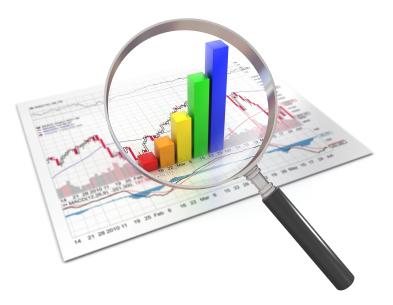By Saum Mathur.
Accurate financial forecasts create predictability in business and help inform more agile decision making. Incorporating AI into financial forecasting can help provide stability and adaptability to a company during uncertain times. With current unstable market dynamics and inflation on the rise, businesses must become proactive to deliver strong financial performance.
One way to do that? Intelligent financial forecasting. Beyond traditional forecasting methods, intelligent forecasting leverages artificial intelligence and automation to model actual business dynamics and account for external factors.
Look Forward and Backward to Increase Agility
Building a forecast, analyzing financials, and conducting scenario analysis provides key financial insights to push business decisions in the right direction. Employing AI makes for better, quicker management decisions, especially in times of economic uncertainty. A company that is constantly adjusting and iterating to hit their targets will be much further ahead than one that moves forward by simply looking backward at results without taking into account constantly changing real world factors.
Consider How External Factors Impact Accuracy
The accuracy of traditional forecasts is dismal, but AI solutions can provide nearly 97% accuracy. According to Brookings, despite the inherent risk, AI has the capability to increase levels of accuracy and fairness by identifying unique relationships within data that are undetectable by current models. AI solutions direct more data through the algorithm because AI and ML models aren’t limited in the amount, type, or quality of data they can receive. As long as there is a sufficient amount of data to input, accounting and finance teams can create a predictive model for intelligent forecasting.
Intelligent forecasting offers the unique benefit of employing AI to model and determine the external factors and key drivers that matter most for business dynamics. Macroeconomic conditions, stock market conditions, and simple day-to-day changes in the world impact business conditions. When taken to the next level, such as during the COVID-19 pandemic, outside global business dynamics changed drastically, and traditional forecasting methods failed many companies because they didn’t take into account external factors. AI-enabled scenario analysis can help course correct in situations like these.
Benchmarking makes a world of difference in preventing errors when dealing with external factors. AI modeling is still developing, and technology is not always sophisticated enough to know that a disruptive event has occurred. An AI model could possibly adjust a forecast incorrectly if it assumed an atypical performance occurred under normal circumstances, when in reality it was due to an external event such as an earthquake or even a pandemic. It’s best to maintain a performance benchmark within the model so if the forecast hits or exceeds said benchmark, the team will be alerted to the anomalous event and the model can be adjusted as needed.
Align on Business Drivers
Internal factors matter just as much as external, as business drivers will vary from company to company.
If one were to ask 10 executives in the same company what drivers of business are, there would probably be 10 different answers, and all of these answers are valid. What makes AI dynamic is that it will tell you which drivers matter most when it comes to financial outcomes. AI allows businesses to layer complexity into forecasts to help determine strategic priorities and growth targets.
A strong internal foundation can help build a competitive advantage and prepare businesses for times of economic uncertainty that exist outside their control.
Access to Data is Crucial
Businesses looking to improve their financial modeling through the use of AI should have greater than $10M in annualized revenue before making an investment of this sort. In other words, all businesses from medium to enterprise can take advantage of intelligent forecasting. Access to large amounts of data is essential in informing AI’s accuracy, so maintaining a robust amount of historical data – as is generally available in businesses that have achieved at least $10M in revenue – to make use of developing an AI-based forecasting model is crucial.
We’ve established that AI forecasting is only as credible as the data provided. In addition to historical data, finance and accounting teams must constantly feed the AI model the most up-to-date performance data to ensure the model’s performance doesn’t lessen over time. Retraining your model with recent data and monitoring performance helps ensure continued accuracy of reports.
Beware of Solutions that Overpromise
AI solution vendors promise a lot, but don’t always deliver in the long run. Be extremely wary of any black box solutions that seem too good to be true. Rarely will they be a good match for your business, and they generally won’t work over time. Instead of falling victim to a scam in a buzzword-heavy industry, consider strengthening and solidifying your solution internally by hiring a data science team. If you do go with an outside vendor, ask both how you can trust the AI solution now and how it will perform in the future.
Get Ahead of the Curve, For Good
Using intelligent forecasting forces finance and accounting leaders to better understand what truly drives their business forward. We’ve seen what happens in the startup world: so-called “unicorns” are shrinking because they don’t understand what drives them. To prevent shrinkage and drive efficient growth, leaders should consider AI-powered intelligent forecasting that enables more dynamic and actionable business decisions. In turn, organizations will be better able to manage and compensate for changes in trajectory.
===
Saum Mathur is Chief Product, Technology & Artificial Intelligence Officer at Paro, an AI-powered marketplace disrupting the way companies access on-demand financial talent.
Thanks for reading CPA Practice Advisor!
Subscribe Already registered? Log In
Need more information? Read the FAQs




